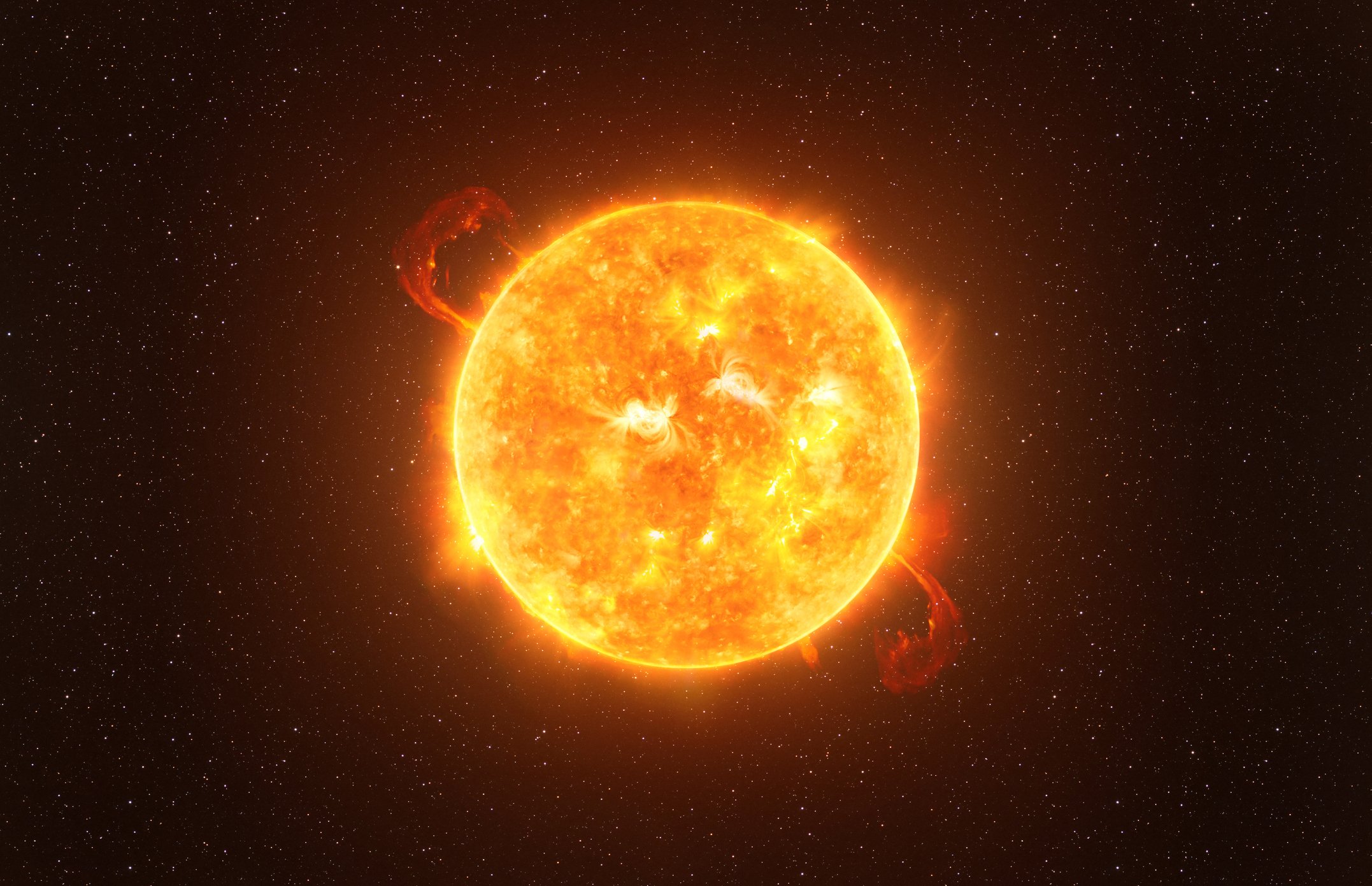Considered the most important star in our solar system, it is this massive cosmic object that ultimately brightens days on Earth and makes life as we know it possible. A massive fireball that burns continuously at almost unimaginable temperatures; If it were too close to the star it would be impossible for a human to survive..
Here on Earth, if we use fire to burn something, the element uses its own oxygen in the area to power the flame. In other words, it will not be possible to start the burning process with fire in a completely closed and vacuum environment. This is exactly why many people wonder… After all, how can the Sun burn so intensely if there is no oxygen in space?
“The Sun, like other stars, is a ball of gas. It consists of 91.0% hydrogen and 8.9% helium according to its atomic number. By mass, the Sun is approximately 70.6% hydrogen and 27.4% helium. The enormous mass of the Sun is held together by gravitational attraction, producing tremendous pressure and temperature in its core,” explains the US National Aeronautics and Space Administration (NASA) in an official publication.
First of all, it is necessary to explain that oxygen is present in some parts of space, but it is a little different. Molecular oxygen can only be found in molecular format in some places, such as the Rho Ophiuchi cosmic cloud and the Orion Nebula. However, the reason why the star in the solar system constantly produces high temperatures is not oxygen.
TecMundo has gathered information from experts in the field, astronomers and other scientists to explain a little more how the Sun ‘burns’ in space without oxygen. Check out!
Without Oxygen: Fire in the Sun
It is important to emphasize that despite the presence of molecular oxygen in space, this is not what keeps the Sun burning continuously; In fact, this type of oxygen is not found in abundance. The truth is that fire as known to humanity probably exists only on Earth.. Our planet is the only place where we categorically know that fire can be produced.
The truth is that the Sun does not burn the same fire that we find on Earth; It is a powerful nuclear reaction that releases huge amounts of energy. The Sun is like a huge ball of gas, consisting of 91% hydrogen and 8.9% helium in terms of atomic number. It represents approximately 70.6% hydrogen and 27.4% helium by mass.
“The temperature at the core is about 27 million degrees Fahrenheit (15 million degrees Celsius), which is enough to sustain thermonuclear fusion. This is a process in which atoms combine to form larger atoms, releasing impressive amounts of energy in the process. Specifically, hydrogen atoms in the Sun’s core “It combines to form helium. The energy produced in the core powers the Sun and produces all the heat and light the Sun emits.” adds NASA.
In order for nuclear fusion to occur flawlessly, the particles of the Sun must collide with each other quickly and these collisions must be strong enough to remain as a single large mass.. Nuclear fusion activity is so intense that it releases unimaginable amounts of energy. It causes high temperatures in the core and surface of the Solar System’s parent star.
Although heat is distributed throughout the Sun, the core is the hottest region, and from there temperatures radiate out to the edges. In addition to being responsible for high temperature, This process also causes the star to shine and illuminate the surrounding regions, just like during the day on Earth.
Solar radiation is transported through the radioactive zone and takes up to 170,000 years to leave the core and reach the top of the convective zone on the sun’s surface, where large bubbles of hot plasma form.
According to NASA, the star’s surface reaches temperatures of 5,500 degrees Celsius. Although it already represents high temperatures, the heat in the core is even more intense; It reaches the point where it causes very hard substances such as graphite and diamond to boil.
Well, There is no type of fire on the Sun as we know it on our planet.Because high amounts of energy and high temperatures arise from the nuclear reaction in the center of the star. The heat reaching the Earth results from solar radiation emitted by the Sun as it interacts with particles in the Earth’s atmosphere.
Did you like the content? So don’t forget to share the article on your social networks, after all, your friends may also want to learn about this curiosity about our star king!
Source: Tec Mundo
I’m Blaine Morgan, an experienced journalist and writer with over 8 years of experience in the tech industry. My expertise lies in writing about technology news and trends, covering everything from cutting-edge gadgets to emerging software developments. I’ve written for several leading publications including Gadget Onus where I am an author.













